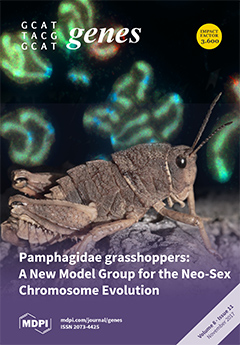Catalases are ubiquitous hydrogen peroxide-detoxifying enzymes. They participate in fungal growth and development, such as mycelial growth and cellular differentiation, and in protecting fungi from oxidative damage under stressful conditions. To investigate the potential functions of catalases in
Pleurotus ostreatus, we obtained
[...] Read more.
Catalases are ubiquitous hydrogen peroxide-detoxifying enzymes. They participate in fungal growth and development, such as mycelial growth and cellular differentiation, and in protecting fungi from oxidative damage under stressful conditions. To investigate the potential functions of catalases in
Pleurotus ostreatus, we obtained two catalase genes from a draft genome sequence of
P. ostreatus, and cloned and characterized them (
Po-cat1 and
Po-cat2).
Po-cat1 (group II) and
Po-cat2 (group III) encoded putative peptides of 745 and 528 amino acids, respectively. Furthermore, the gene structures were variant between
Po-cat1 and
Po-cat2. Further research revealed that these two catalase genes have divergent expression patterns during different developmental stages.
Po-cat1/Po-cat1 was at a barely detectable level in mycelia, accumulated gradually during reproductive growth, and was maximal in separated spores. But no catalase activity of Po-cat1 was detected by native-PAGE during any part of the developmental stages. In contrast, high
Po-cat2/Po-cat2 expression and Po-cat2 activity found in mycelia were gradually lost during reproductive growth, and at a minimal level in separated spores. In addition, these two genes responded differentially under 32 °C and 40 °C heat stresses.
Po-cat1 was up-regulated under both temperature conditions, while
Po-cat2 was up-regulated at 32 °C but down-regulated at 40 °C. The accumulation of catalase proteins correlated with gene expression. These results indicate that the two divergent catalases in
P. ostreatus may play different roles during development and under heat stress.
Full article






